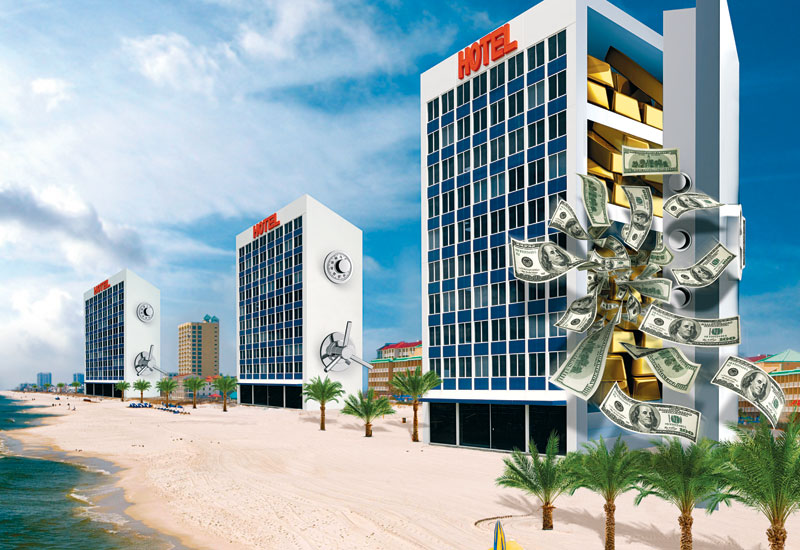Ahead of the Arabian Hotel Investment Conference, Louise Oakley asks key speakers and industry heavyweights where, why and how to invest in hotels in the Middle East
As the industry gears up for the Arabian Hotel Investment Conference (AHIC) — being held at Madinat Jumeirah in Dubai from May 1-3 — the same questions are on everyone’s lips; where is there still potential for hotel investment, how do I secure funding, how do I develop my project, and ultimately, how do I ensure my hotel is a market leader and a money maker?
Aptly then, this year’s AHIC is focused on ‘Unlocking Investment Opportunities in the Middle East and North Africa’, with more than 500 top industry analysts, investors, owners and operators from across the Middle East, North Africa, Europe, Asia and the US expected to come together to debate the changing investment and hotel sector landscape in the region.
The basic premise behind the theme is simple; despite the economic downturn and current tourism environment, hotel supply in the Middle East and North Africa (MENA) will not be sufficient to meet demand in the longer term, as concluded by the Jones Lang LaSalle Hotel Investment Outlook 2010.
The report forecasts that once conditions improve, extensive growth in tourism demand could allow for a quick absorption of current and future hotel supply.
Mark Wynne-Smith, CEO of Jones Lang LaSalle Hotels, EMEA and moderator of the Leaders Panel AHIC session — which will see the bosses of Wyndham Hotel Group, Rezidor, Jumeirah Group, Golden Tulip and Kingdom Hotel Investments take to the stage — said: “Development activity will likely remain subdued in some markets in the short-term but we expect pick up across the entire market in the medium and longer term”.
This is supported by the United Nations World Tourism Organisation (UNWTO) report entitled 2009 International Tourism Results and Prospects for 2010’, which saw a 2% upswing in global international tourist arrivals for business, leisure and other purposes during the last quarter of 2009, with the Middle East, and Asia-Pacific leading the recovery through positive growth in both regions in the second half of 2009.

Advertisement
The report has also forecast growth of 5-9% for the Middle East in 2010, compared with a 3-4% world growth forecast.
Furthermore, recent figures from the International Air Transport Association (IATA) showed that MENA regional airlines grew overall passenger traffic by 11.2% in 2009, and ended with growth of 19.2% in December 2009 compared with December 2008, with this largely attributable to expansion by Etihad Airways and Emirates Airline.
Etihad Airways chief commercial officer Peter Baumgartner, who will be addressing the impact of airline growth on hotel industry demand at AHIC, commented: “Air travel plays a vital role in bringing visitors to the region, and the growth in passenger numbers in 2009, despite the difficult industry conditions, is a positive sign for everyone involved in the MENA region’s hotel and tourism sectors”.
According to Bench Events chairman and AHIC organiser Jonathan Worsley, these statistics coupled with industry sentiment following the International Hotel Investment Forum in Berlin shows the consensus to be “that the worst of the global economic crisis is over”.
“Intelligent and targeted investment is vital for the industry as the region recovers from the downturn, and the insight that will be offered by the group of speakers that will gather in Dubai in May will be invaluable for everyone involved in the industry,” said Worsley.
ROOM FOR MORE
The upshot is that hotel investment is most definitely still needed in this region. But while the positive outlook is refreshing, it is not certain. The key to success will be identifying opportunities, unlocking potential, obtaining funding and securing projects. And to achieve this, there are several challenges to be overcome, explained IFA Hotel Investments president Joe Sita, who will be speaking on the panel ‘Attracting the attention of today’s hotel investor’ at the conference.
“The objectives for investors in the Middle East are no different from other parts of the world: everyone is looking for good capital growth and good returns that are risk adjusted to their local market,” said Sita. “A project needs to not only show promise over the long-term, but also produce a positive income return throughout the life of the investment.”
Sita said the risk premium is higher in the region, in particular in Dubai, at present, but that he believes “it will see significant growth again and, as a result, the region will deliver good capital appreciation”.
The biggest challenge is the “dearth of debt funding” in all markets, which reduces the liquidity available, he said.
“As a result, investors need to put in more equity today than was required two years ago. For this to make financial sense, investors need higher returns,” said Sita.










 Search our database of more than 2,700 industry companies
Search our database of more than 2,700 industry companies









